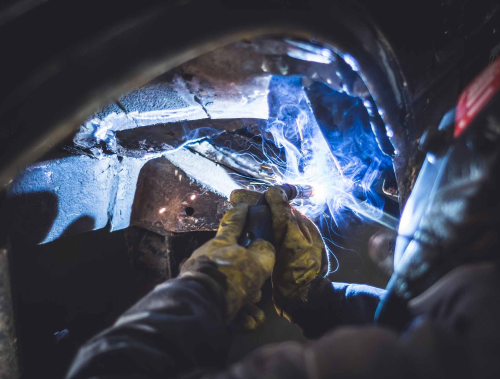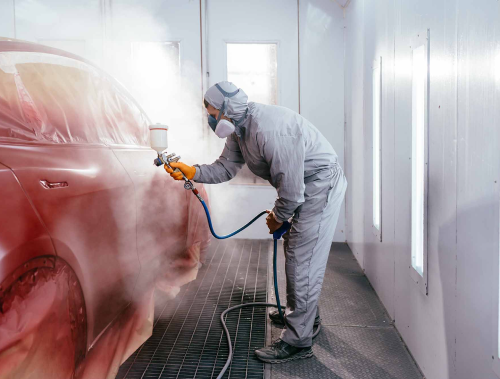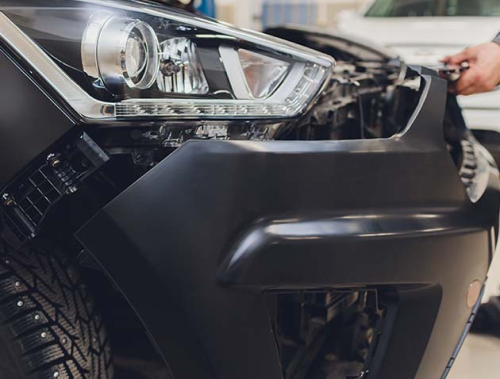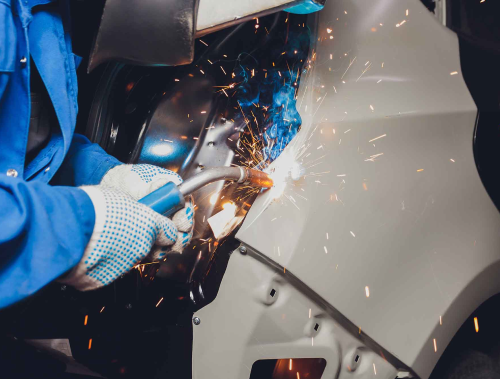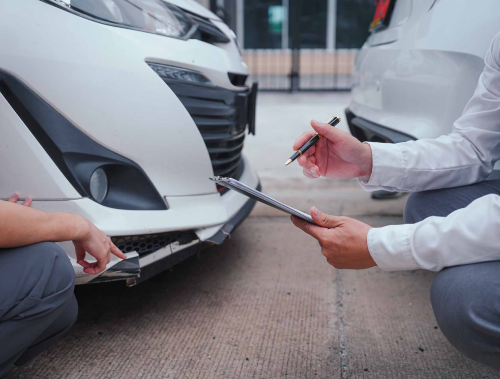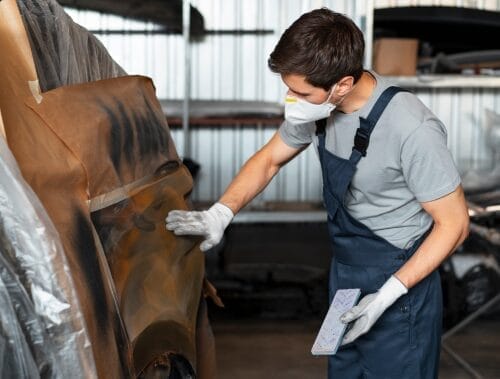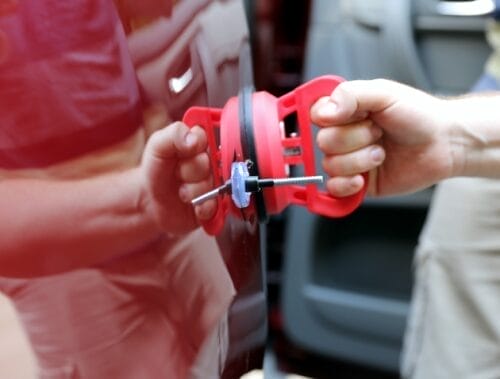Maintaining the durability and appearance of your vehicle’s paint is essential for preserving its value and keeping it looking its best. Whether you’re a car owner who takes pride in your vehicle or an enthusiast who wants to maintain that showroom shine, taking the right steps to protect your car’s paint can make all the difference. This guide provides practical tips and strategies, integrating specific services and protective measures to ensure your vehicle’s paint stays in top condition for years to come.
Regular Washing Practices
Regular washing is the cornerstone of paint protection. Keeping your vehicle clean helps prevent dirt, dust, and other contaminants from damaging the paint, which can lead to fading, scratches, and other long-term issues.
Importance of Regular Washing
Explanation:
Consistent washing is crucial to remove harmful contaminants that accumulate on your vehicle’s surface. Dirt, dust, bird droppings, and tree sap can all cause damage if left untreated, leading to dullness, scratches, or even corrosion. Regular washing ensures these elements are removed before they have a chance to harm the paint.
Frequency:
How often you should wash your car depends on several factors, including where you live and how often you drive. For instance:
- In urban areas with lots of pollutants, weekly washing is recommended.
- In less polluted areas or during seasons with less rain, bi-weekly or monthly washing may be sufficient.
Regular maintenance like this helps prevent long-term damage and keeps your paint looking fresh. If you’re dealing with persistent damage, you may need professional assistance from an auto body shop.
Proper Washing Techniques
Tools and Products:
Using the right tools and products is key to protecting your paint during washing. Avoid using household sponges or dish soaps, as these can be too abrasive and strip the wax or sealant from your vehicle’s surface. Instead:
- Soft, non-abrasive cloths or sponges: These materials prevent scratches.
- pH-balanced car wash soap: Designed specifically for automotive paint, these soaps clean effectively without stripping protective layers.
Procedure:
Here’s a step-by-step guide to washing your car safely:
- Rinse thoroughly: Start by rinsing the car with water to remove loose dirt and debris.
- Wash in sections: Use a soft cloth or sponge with car wash soap, working in small sections to ensure even cleaning.
- Rinse often: Regularly rinse your cloth or sponge to remove trapped dirt that could scratch the paint.
- Final rinse: After washing, thoroughly rinse the car to remove all soap residues.
- Dry with a microfiber towel: This helps prevent water spots and streaks.
Starting with a clean surface, as emphasized in the image, is crucial before applying any protective layers like wax or sealants.
Waxing and Sealing
Waxing and sealing are essential steps in protecting your vehicle’s paint from environmental damage and maintaining its shine.
Benefits of Waxing
Protection:
Waxing adds a protective layer over your vehicle’s paint, shielding it from harmful UV rays, water, pollutants, and even minor abrasions. This layer not only preserves the paint’s color and gloss but also makes washing easier by creating a barrier that dirt and grime struggle to adhere to.
Frequency:
To maintain optimal protection, waxing should be done regularly:
- Every 3 months in mild climates or under normal driving conditions.
- Every 6-8 weeks in harsher environments, like areas with high pollution, frequent rain, or strong sun exposure.
Incorporating regular waxing into your maintenance routine helps ensure long-lasting protection and shine.
Using Sealants and Ceramic Coatings
Sealants vs. Wax:
While waxes provide good protection, synthetic sealants offer enhanced durability and longevity. Sealants, such as the Universal Sealer ($99.95) or Urethane Single Stage ($799.95) mentioned in the image, form a stronger bond with the paint, offering longer-lasting protection—typically up to 6 months or more.
Ceramic Coatings:
For even more durable protection, ceramic coatings are an excellent choice. These coatings provide a tough, long-lasting shield that can protect the paint for years rather than months. Benefits include:
- Superior protection: Ceramic coatings offer exceptional resistance to UV rays, chemical stains, and bird droppings.
- Enhanced gloss: These coatings give the paint a deep, reflective shine that surpasses traditional wax.
- Hydrophobic properties: Water beads off easily, making cleaning simpler and reducing the risk of water spots.
While ceramic coatings can be more expensive and require professional application, they offer the best long-term protection for your vehicle’s paint.
Protecting from Environmental Factors
Environmental factors such as UV rays, bird droppings, and harsh weather can all take a toll on your vehicle’s paint. Taking steps to protect your car from these elements is crucial for maintaining its appearance.
UV Protection
Parking in the Shade:
One of the simplest ways to protect your vehicle’s paint from UV damage is by parking in shaded areas whenever possible. Prolonged exposure to the sun’s rays can cause the paint to fade and oxidize, leading to a dull, chalky appearance.
Use of Car Covers:
When parking outdoors for extended periods, especially in sunny environments, using a car cover can provide significant protection. A high-quality car cover shields the paint from UV rays, as well as from other contaminants like bird droppings and tree sap. This aligns with the image’s focus on preserving the finish quality of various paint services, ensuring your car looks its best for longer.
Protection from Contaminants
Bird Droppings and Tree Sap:
Bird droppings, tree sap, and other contaminants are highly acidic and can eat into your vehicle’s paint if not removed promptly. These substances can cause permanent damage if left untreated, leading to costly repairs.
Avoiding Harsh Chemicals:
It’s also important to avoid using harsh chemicals or abrasive materials that can strip the paint or cause damage. Instead, use gentle, paint-safe cleaners to remove these contaminants. Using high-quality products, as emphasized in the image, is key to preserving your vehicle’s finish and avoiding unnecessary damage.
Addressing Paint Damage Promptly
No matter how careful you are, paint damage can happen over time. Whether it’s from a minor scratch, a chip, or the inevitable fading due to exposure to the elements, addressing these issues promptly is key to maintaining your vehicle’s appearance and preventing further deterioration.
Identifying Paint Issues
Common Issues:
The most common paint issues that car owners face include scratches, chips, and fading. Scratches can occur from everyday wear and tear, such as brushing against the car with keys in hand or parking too close to bushes. Chips often result from small rocks or debris hitting the car while driving. Fading occurs over time due to prolonged exposure to sunlight and other environmental factors.
The image highlights specific surface repair services like Light Scratch/Chip Repair ($149.95) and Medium Scratch/Chip Repair ($199.95). These services are crucial because addressing these problems early can prevent them from worsening, which could lead to more expensive repairs or even a complete repaint.
Regular Inspection:
To stay on top of these issues, regular inspections of your vehicle’s paint are essential. Taking a few minutes every couple of weeks to check for new scratches, chips, or signs of fading can help you catch and address problems before they become significant. This proactive approach not only maintains the paint’s durability but also saves you money in the long run by avoiding more extensive repairs.
Repair and Maintenance
Touch-Up Techniques:
For minor scratches and chips, touch-up paint can be a quick and effective solution. Here are some tips to ensure you get the best results:
- Clean the area: Before applying touch-up paint, make sure the area is clean and dry. Use a mild soap and water to remove any dirt or debris.
- Apply thin layers: Apply the touch-up paint in thin, even layers. It’s better to build up the color gradually than to apply too much at once, which can lead to uneven coverage.
- Allow drying time: Let each layer dry completely before applying the next. This will help achieve a smooth, even finish.
While touch-up paint is great for minor issues, it’s important to recognize when a problem is beyond DIY repair.
Professional Repairs:
For more significant damage, such as deep scratches, large chips, or areas where the paint has started to fade noticeably, professional repair is often the best option. Professional services can restore the paint to like-new condition, ensuring that the repair blends seamlessly with the rest of the vehicle. The image’s detailed repair service options reinforce this idea, showing that quality professional repair services are invaluable for maintaining your car’s appearance and value.
Long-Term Paint Protection Strategies
In addition to regular washing, waxing, and prompt repairs, there are long-term strategies you can implement to protect your vehicle’s paint and keep it looking pristine for years to come.
Use of Paint Protection Films (PPF)
Benefits:
Paint Protection Films (PPF) are an excellent investment for those looking to add an extra layer of defense against the elements. These films are particularly useful on high-impact areas like the front bumper, hood, and side mirrors, where chips and scratches are most likely to occur. PPF provides a durable, invisible barrier that helps preserve the paint underneath, making it a perfect complement to the premium paint services mentioned in the image.
Longevity:
PPFs are designed to be long-lasting, often providing protection for several years before they need to be replaced. This durability not only extends the life of your paint but also maintains the vehicle’s resale value. By preventing damage before it happens, PPFs reduce the need for frequent repairs and keep your car looking new for longer.
Garage Storage
Indoor Parking:
Whenever possible, park your vehicle in a garage to shield it from the elements. Indoor parking protects your car from UV rays, rain, snow, and debris—all of which can contribute to paint damage. This is particularly important for maintaining the quality of high-gloss finishes and multi-stage paints, as depicted in the image.
Climate Control:
For those with access to a climate-controlled garage, maintaining a stable environment can further protect your vehicle’s paint. Fluctuations in temperature and humidity can cause the paint to expand and contract, leading to cracking and other forms of damage over time. By keeping your vehicle in a climate-controlled space, you help preserve the integrity of the paint and extend its lifespan.
Conclusion
Ensuring the durability of your vehicle’s paint involves a combination of regular maintenance, prompt repair, and long-term protective strategies. By following the steps outlined in this guide—such as regular washing, waxing, protecting from environmental factors, and addressing paint damage quickly—you can maintain your car’s appearance and value for years to come. Remember, investing in high-quality products and services, as highlighted in the image, is key to achieving the best results. With the right care, your vehicle’s paint can continue to shine like new, no matter where the road takes you.

